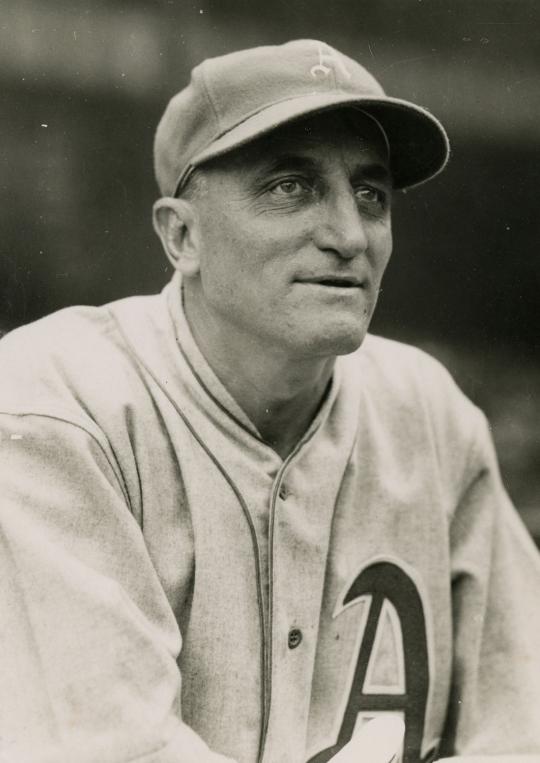Week 13: Magic Mud
Good morning baseball fans. It’s the day you’ve been waiting for. America’s National Pastime has returned! Hope is springing, bats are swinging, lots of really bad singers are singing. And a nation turns its lonely eyes to…New Jersey!!
(What’s that, you say? Jersey’s got nothing to do with baseball! There aren’t any major league teams in the Garden State; the Mets still play in Queens, Yankee Stadium is still in the Bronx, and it doesn’t look like the Phils will be crossing the Delaware any time soon.)
All true, but follow along with me here. Let’s go back to a simpler time. The date is August 16, 1920. On this day, the Cleveland Indians are playing the Yankees at the Polo Grounds. Up to the plate steps Indian shortstop Ray Chapman, known as one of the best bunters in the game. He’s a little guy, and he’s probably crowding the plate. On the mound for the Yankees is Carl Mays, a pitcher with a unique submarine delivery. It’s late in the game, the light is failing, and Mays has probably done what all pitchers did back then, which was take the shine off the ball with some combination of dirt, sweat, spit, tobacco juice, tar, shoe polish, you name it. The ball is probably very dark and hard to see.
Mays delivers, the crowd hears an audible POP and the ball rolls halfway to the mound. Mays fields it and throws it to first. Whereupon the home plate umpire notices that Chapman hasn’t moved, he is still standing in the batter’s box…and he is bleeding from his ear. Chapman mumbles, “I’m all right, tell Mays not to worry, Katie’s ring,”…and falls lifeless to the ground. Players from both teams race in, a doctor examines him and determines he’s been struck in the head. Chapman is taken to the hospital but never regains consciousness. When his wife Katie arrives from Cleveland the next morning she is told he died during the night.
The death of Ray Chapman is one of the most infamous moments in league history, and to this day it remains the only on-field fatality in major league baseball. It would lead to the eventual mandating of batting helmets, and in the short term it would create some new rules regarding how pitchers could or could not mess with the balls.
Jump to 1938. The third base coach for the Philadelphia Athletics is a guy named Lena Blackburne. One day during batting practice, he pulls out a handful of mud that he scooped up the previous day at one of his fishing holes. It has the consistency of a cross between chocolate pudding and whipped cold cream. He rubs it onto one of the balls, and finds that it takes the shine off the ball, it dries in seconds, and it provides a dependable grip. It’s also odorless and almost colorless, so even in low light the batters can clearly see the ball.
The Athletics start prepping all their game balls with it. Visiting teams are impressed, and pretty soon the telegrams start arriving asking how they can get themselves a bucket of the ‘magic mud.’ In no time, the entire American League is using it, and the National League follows suit in the 1950’s. And thus was born Lena Blackburne’s Baseball Rubbing Mud, which has been the standard in baseball and softball ever since.
Not much is known about it. The stuff is collected just once a year. Each July, a crew goes out and scoops up about a thousand of pounds of sludge. It is then cleaned and goes through a proprietary process to ensure consistency. It sits over the winter and is sold the following spring, for the upcoming season.
Of course, everybody wants to know where the glorious goo comes from. And there’s the, um, the rub. Before Lena Blackburne died in 1968, he willed the business to a partner, who eventually passed it along to a son-in-law, who then gave it to his son. And that guy is definitely not giving away the secret.
All we know is that it comes from the Delaware River. From a tidal pool along the east shore. Somewhere in the county of Burlington.
Which means two things.
One, leave it to folks from New Jersey to make a whole lot of money selling nasty river muck.
And two, as the new season kicks off and for every game to come, every heater, curve, splitter, knuckler, change-up, backdoor slider, pea, tater, bloop, dying quail, flare, liner, moon shot, triple-bagger, grand slam and even Texas Leaguer will have a little bit of Jersey on it.
